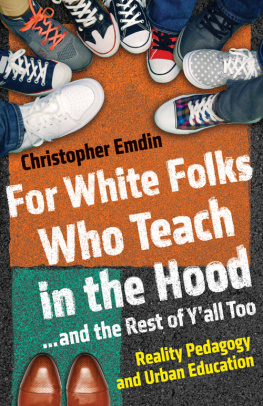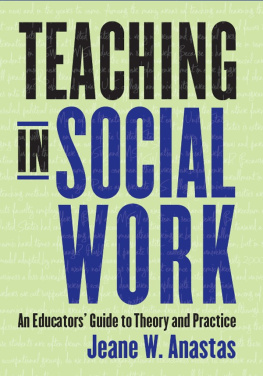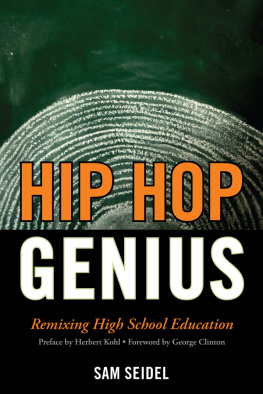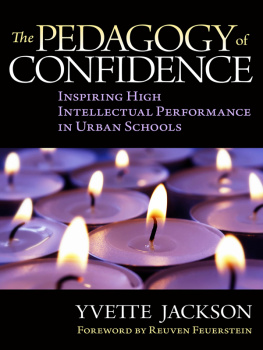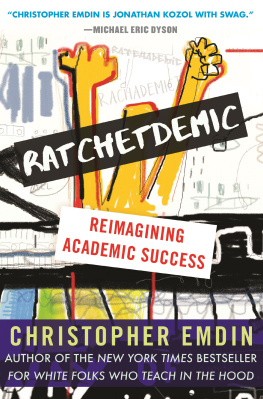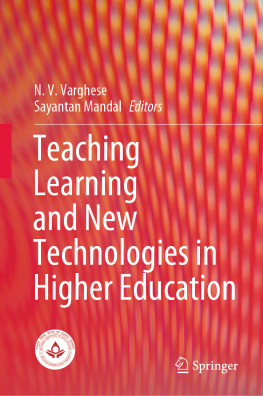Christopher Emdins For White Folks Who Teach in the Hood... and the Rest of Yall Too is a brilliant, blistering, and bracing call to arms for those who teach and learn in urban America. Pivoting effortlessly from street vernacular to sophisticated theory without losing the common touchor the lovely language and lucid thoughtEmdin reminds us that the children and young people who throng our urban schools are worthy of every attempt to sharpen their minds and prepare them for a satisfying life far beyond the classroom. If youre looking for the revolutionary meaning, and imaginative transformation, of teaching for the real America, youre holding it in your hands! Christopher Emdin is Jonathan Kozol with swag!
Michael Eric Dyson, author of The Black Presidency:
Barack Obama and the Politics of Race in America
Christopher Emdins For White Folks Who Teach in the Hood... and the Rest of Yall Too is essential reading for all adults who work with black and brown young people. In crisp and elegant form, he brilliantly weaves together an archive of literary, academic, and what he terms neoindigenous forms of knowledge to develop critical theory. Emdin draws upon the intellectual and creative gifts that emerge from the students and their traditions and challenges, and unravels the widespread fiction that they are incapable, unprepared, and uninterested in school. Ultimately, he sets forth best pedagogical practices to replace ones that repeatedly fail. Throughout, Emdin shares his own revelatory personal narrative as a student and educator in vivid and captivating detail. His prose is engaging, poignant, and humorous at times, and his book is accessible and broadly appealing. Yet it is also filled with exceptional intellectual sophistication and necessary wisdom for the future of education.
Imani Perry, author of Prophets of the Hood:
Politics and Poetics in Hip Hop
For White Folks Who Teach in the Hood... and the Rest of Yall Too is an important addition to the field of teacher education. From hip-hop to high theory, the journey Christopher Emdin takes us on is at once critical and compassionate, analytical and actionable. Through rich stories and well-developed frameworks, For White Folks offers a compelling and accessible road map for anyone (not just white folks!) teaching twenty-first century urban youth. It also confirms Christopher Emdins reputation as one of the most important education scholars of our generation.
Marc Lamont Hill, author of Beats, Rhymes, and Classroom Life:
Hip-Hop Pedagogy and the Politics of Identity and Distinguished
Professor of Africana Studies at Morehouse College
A generation ago Ntzoke Shange gave us a choreopoem. Today, Christopher Emdin offers us a pedagopoem. This volume is a powerful dance of teaching and art. It engages both the art and science of what teachers must do to be successful with all students. It is simultaneously lyrical and analytic, scientific and humanistic, a work of the heart and the mind. It belongs in every teachers library!
Gloria Ladson-Billings, the Kellner Family Distinguished
Chair in Urban Education, University of WisconsinMadison

Preface
I have always been fascinated by the brilliant theater piece For Colored Girls Who Have Considered Suicide / When the Rainbow Is Enuf, by Ntozake Shange. I was first drawn to this powerful work by its colorful cover, and I fell in love with it when I began to read the powerful prose. As a teenager, it was the title that affected me most. Seeing the word enuf in print, on the cover of a book, meant the world to me. It was bold and provocativeand it comforted me to know that someone from outside the four-block radius I called home knew this word. Enuf and enough are very different words. They have the same meaning, can be used in the same context, but each has very different significance to those who employ them. Enuf sits comfortably in the subtitle of a book like For Colored Girls Who Have Considered Suicide, allowing the work to call out to those for and about whom it is written. Its presence in the book title indicates that there is no political correctness, no tainting of the truth, and no hiding of what needs to be said. It prepares the reader for the substance of the text.
In many ways, this book draws from the traditions set forth by Shange. While it is neither a collection of poems and stories nor a theater piece, its intentions are similar. The title works toward invoking necessary truths and offering new ways forward. It is clearly intended for white folks who teach in the hood. But it is also for those who work with them, hire them, whose family members are taught by them, and who themselves are being, or have been, taught by them.
In short, this book is for people of all colors who take a particular approach to education. They may be white. They may be black. In all cases, they are so deeply committed to an approach to pedagogy that is Eurocentric in its form and function that the color of their skin doesnt matter. When I say that their skin color doesnt matter, I am not dismissing the particular responsibilities of privileged groups in societies that disadvantage marginalized groups. I am also not discounting the need to discuss race and injustice under the fallacy of equity. What I am suggesting is that it is possible for people of all racial and ethnic backgrounds to take on approaches to teaching that hurt youth of color. Malcolm X described this phenomenon in a powerful speech about the house Negro and the field Negro in the slave South. He described the black slave who toiled in the fields and the house Negro who worked in the white masters house. He noted that at some point, the house Negro became so invested in the well-being of the master that the masters needs and concerns took preeminence over his own needs and that of the field Negro. This is the equivalent of the black educator so invested in the structure and pedagogies of the traditional school system that the needs of black and brown students become secondary to maintaining the status quo. For the white educator, this investment in traditional schooling is often generational, following the beliefs of parents and grandparents with college degrees and ideas about what school should look like. The point here is that there are both black and white people who can be classified as white folksin that they maintain a system that doesnt serve the needs of youth in the hood.
The hood is often identified as a place where dysfunction is prevalent and people need to be saved from themselves and their circumstances. The hood may be urban, rural, densely or sparsely populated, but it has a number of shared characteristics that make it easy to recognize. The community is often socioeconomically disadvantaged, achievement gaps are prevalent, and a very particular brand of pedagogy is normalized. In these communities, and particularly in urban schools, African American and Latino youth are most hard hit by poverty and its aftereffects. For example, in Atlanta, 80 percent of African American children have been reported to live in conditions of high poverty, compared with 29 percent of their Asian peers and 6 percent of their white peers. In fact, the largest twenty school districts in the nation enroll 80 percent minority students, compared with 42 percent in all school districts. In cities like Los Angeles, Chicago, and Miami, urban schools enroll less than 10 percent Anglo students, even though the teachers are overwhelmingly white. In New York public schools, over 70 percent of high school youth are students of color, while over 80 percent of public high school teachers in the state are white.

